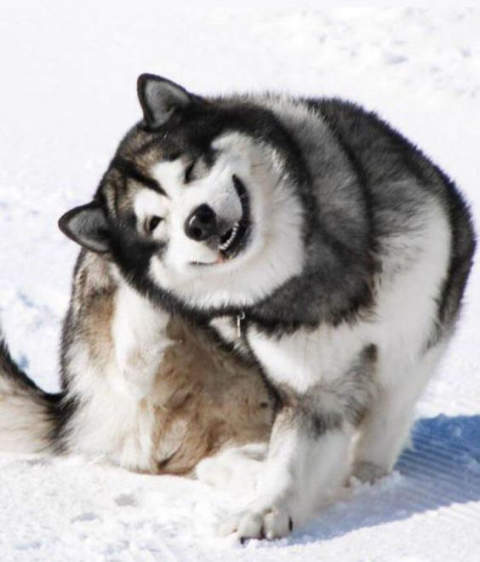
The Alaskan Malamute, also called the Alaskan Dog, is one of the oldest polar sled dogs. Its name is taken from the Inuit tribe of the Inuit tribe called Malamute. This tribe lives on a shore called Kotzebue in western Alaska. Adult Alaskan dogs have a quiet, elegant temperament and are very loyal to their owners. The Alaskan Malamute is strong, powerful, muscular, and has a deep chest. When they stand, their heads are upright, their eyes look alert and curious, and they feel energetic and very arrogant. The head is broad, and the ears are triangular. Keep erect when alert. The muzzle is large, and the width gradually narrows from the root to the nose's tip. The muzzle does not appear long and prominent, nor does it appear stubby. The coat is dense, and the skin is long enough to protect the soft undercoat of the inner layer. Alaskan Malamutes come in various colors, such as gray, black and white, and red-brown. The purpose of cultivating it is for endurance rather than speed because their primary goal is to pull sleds.
In the records of the first North American immigrants, records of Alaskan malamutes can be found. Before Alaska became part of the United States, this area was called Alashak or Alyeska, which translates to "broad land," which is the name given to it by the Russians who discovered this area. This kind of dog is different from other dog breeds in Alaska. The limbs are strong and muscular. The purpose of cultivating it is for endurance rather than speed because their primary goal is to pull sleds.
Due to the mutual mating with the imported dog breeds, the original native dog breeds were mixed with various foreign dogs' genes, and the purebred Alaskan Malamutes in the traditional sense were almost entirely extinct.
In the first 20 years of the twentieth century, with the popularity of dog sled racing in North America, Americans realized that it was necessary to regain the Alaskan Malamute, a native sled dog breed. In 1926, American sled dog enthusiasts Began to devote themselves to the systematic selection and breeding of purebred Alaskan malamutes based on native sled dogs and huskies. After nearly ten years of breeding and development, in 1935, the American Kennel Club officially recognized the Alaskan Malamute. In 1996, it was recognized by the World Dog Federation and became the FCI's Alaskan Malamute Standard.
Alaskan Malamute morphological characteristics: broad head, triangular ears, keep erect when alert. The distance between the two ears is vast, the erect ears are turned back, brown, and the size is moderate. Apricot kernel eyes, oblique. The muzzle does not appear long and prominent, nor does it appear short and thick. The chest is thick.
Comments
Add Comment